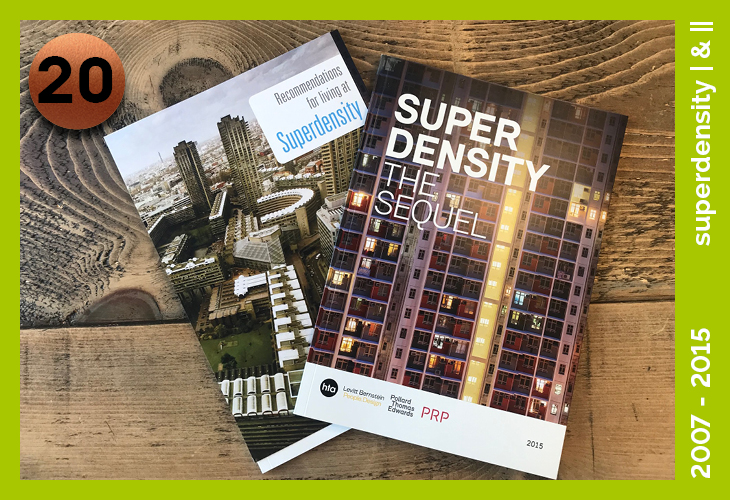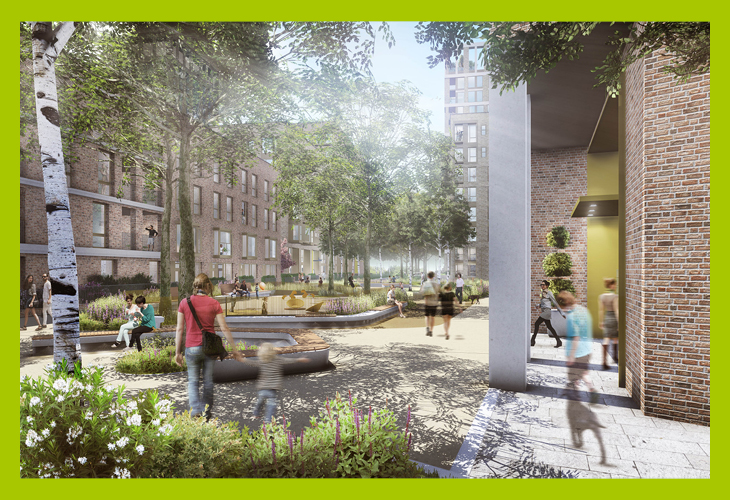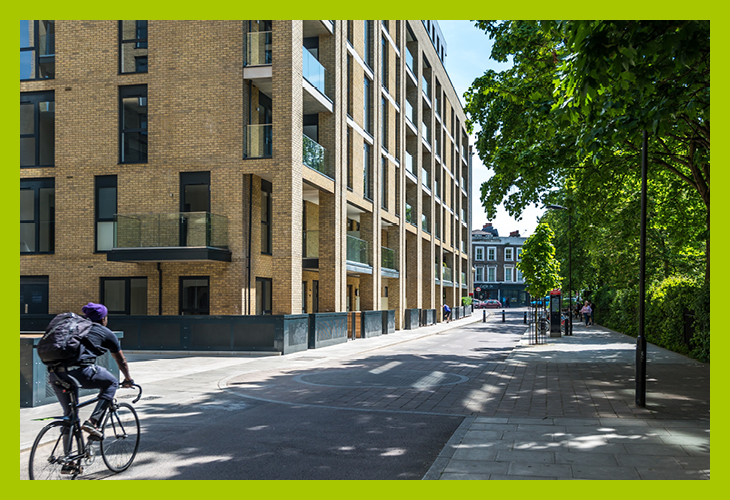HTA@50 - Superdensity I & II
Through HTA Design’s collaboration with the other leading housing practices of Levitt Bernstein, Pollard Thomas Edwards and PRP the collective voice of many combined decades of knowledge and experience was brought to the subject of good quality places for growing urban populations in the reports Superdensity in 2007 and Superdensity the Sequel in 2015.
In response to the sudden increase in densities for new residential developments the first report described Superdensity as developments of more than 150 dwellings per hectare, the sequel introduced the concept of hyperdensity for developments over 350 dwellings per hectare. Their recommendations were made from concerns about the social and environmental impacts of very dense development and their long-term sustainability alongside addressing concerns about the erosion of the London character of mid-rise streets as density pressures consider only towers as the solution.
The ten recommendations addressed Neighbourhood Context, Balanced Communities, Outdoor Space and Public Realm, Flats for Families, Management, Layouts and Access, Privacy, Sustainability, Procurement and Service Charges.
Placemaking was advocated to secure a shared vision between stakeholders, developers and professionals. Schemes should respond to local housing need, houses for families should be included, flats should include single bedrooms and utility spaces to facilitate family life. Adaptable dwellings that can respond to changes to the family would help to support a stable community, and management must be considered early as it is crucial to the success of large developments. Access and security need to be considered early and their effect on the management of the place, and privacy is very important in very dense developments. Masterplans should be in place to provide context to development so transport, servicing and amenities can be considered and the development better integrated. The scale of superdense developments should enable better than average environmental performance and provide shared landscape space and well-lit, well-ventilated homes. Addressing procurement, engaging with Local Authorities early in the design process would open a mutually beneficial dialogue, and new financial models should be explored to avoid high service charges that compromise affordability and exclude local people.
The second report on the subject, Superdensity: The Sequel, was more reflective in approach considering the principle recommendations and their interdependency in four key themes: the degree of density, street life, mixed communities and the all-important component of Management that is so influential over the life of a place. It challenges the assumptions made in the early stages of design to pursue familiar strategies advocating instead engaging with emerging policy and guidance to improve outcomes over the long term.
It can be difficult for designers to come to terms with the complexity of large housing developments when the timescales for taking ideas from the drawing board to being occupied extend the learning cycle over many years. By combining knowledge and experience a wide range of ideas and strategies were shared to avoid repeating past mistakes, highlight best practice and appeal for change toward habitually creating good quality places. Both reports remain current and the issues they address remain with us.












